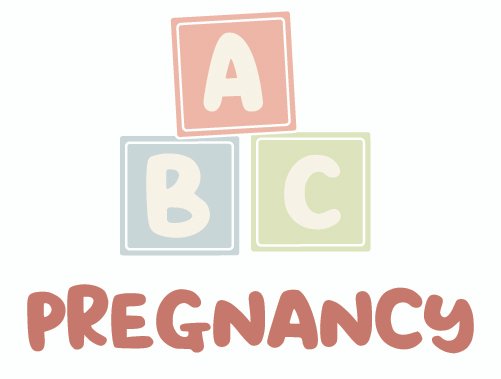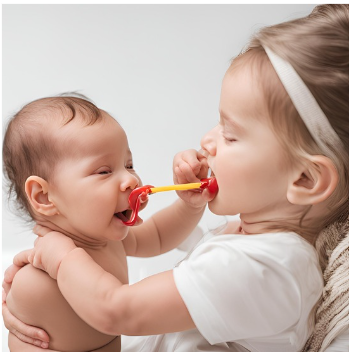is is not medical advice. Please consult a physician about any questions you have.
Your baby’s vision, body, muscle control will change at a rapid rate during the first year. This article will cover he changes and their timing so parents know what to expect as their baby grows.any of your pregnancy questions and concerns.
Motor development basically means the ability to control the body. The speed at which your kiddo will pass through these stages will depend on a lot of factors. Please don’t think of these as written in stone and please speak with your pediatrician about any questions you may have.
Factors to Consider About Motor Development
In my college lab, we worked with a group of kids from before walking, all the way through walking. It was absolutely fascinating to see the different ways the kids navigated, learning how to walk.
We had a child who could walk, but it was difficult for him, due to some impairments. When he was in a hurry, he would get on his hands and feet and just take off. He was so fast, when on all four, I was always worried he would get to our hot light lamps before I could get to him. Why walk on your feet only, when you run like a cheetah on your feet and hands? His ingenious way of getting around worked for him and his situation.
You may find that your child adjusts their skills based on their strengths and weaknesses as well. In our study, some parents worried because their kids weren’t walking yet. While we always say, consult your physician, we would also alert the parents to what we saw with their child. One lady was so distressed about her kid not walking yet. I told her, while I was no doctor, I felt good about where her daughter was, as far as her motor skills. I had watched her daughter walk around the room with every tool she could find. For example, she would grab a chair and cruise around the room. She could walk just fine, but she was afraid to let go of anything. Those tools were her crutches.
By the end of the study, the woman’s daughter had finally decided it was safe to walk without any tools. In fact, she had waited so long that when she finally did walk, she was practically running everywhere. The only thing stopping that little girl from walking was her perfectionism nature.
Other things can factor in as well. We had one kid who carried his baby fat for a long time. It is TOUGH trying to stand with all that baby weight on those little legs. It seemed like overnight, that boy dropped his baby fat and off he went. Another kid, you could tell from how he was built, was going to be a very tall adult. His head seemed almost too big. Imagine trying to walk with a head that is a large percentage of your body! It’s like having a big and uncontrollable weight on your shoulders. A baby doesn’t have the muscle build to control that weight yet, so their head is a big bully! Can you imagine walking like that? At some point, the body catches up and the head is no longer such a burden. When the head is a small enough percentage of the overall body, it is easier to control, and walking will soon follow, as it did for that young fellow.
And lastly, don’t forget about the practice factor. If you don’t think babies are born with a personality, we differ in opinions on that. Some babies are more laid back. Some are driven from the day they arrive. A kiddo that is constantly trying to master their motor skills, will likely do so faster, than a child who is more content “chilling.” Practice makes perfect! Ok, it’s too soon for perfect, but you get the idea.
That was a long and drawn-out way to say, these are just guidelines! Every child will have different factors that can slow down or speed up their motor skills. So, without further ado, here are the different stages of motor skills:
- Newborn (0-1 month):
- Babies have very limited control over their movements. Always keep something under their head, as they don’t have the strength to hold their head up, yet.
- Reflexive movements such as sucking, grasping (palmar grasp reflex), and rooting (turning head towards touch) are predominant.
- Some spontaneous movements of arms and legs, but they are largely uncoordinated. They are trying out their body and seeing what happens, but they are not under control of their limbs.
- Infant (1-3 months):
- Begin to gain more control over reflexes.
- Start to have more purposeful movements of arms and legs.
- Can lift their heads briefly when lying on their stomachs (prone position).
- Start to track objects with their eyes and turn their heads towards sounds.
- Early infancy (4-6 months):
- Develop better head control and can hold their head steady when sitting with support.
- Begin to roll over from tummy to back and vice versa.
- Can push down with their legs when their feet are on a firm surface.
- Start reaching for and grasping objects, first with a clumsy grasp.
- Mid-infancy (7-9 months):
- Sit without support.
- Begin to crawl (some babies skip crawling and move straight to pulling themselves up).
- Use a raking grasp (using fingers to rake objects toward them).
- Explore objects by banging, shaking, and throwing. Life just started getting loud in your home! 😊
- Late infancy (10-12 months):
- Pull themselves up to stand, often using furniture for support.
- “Cruise” along furniture while holding on.
- Start to take their first steps (usually around 12 months, but this varies widely).
- Can grasp objects using a pincer grasp (thumb and forefinger).
- Toddlerhood (12-18 months):
- Walk independently.
- Begin to climb stairs with help.
- Start to feed themselves with fingers and then a spoon.
- Begin to scribble with crayons.
- Late toddlerhood (18-24 months):
- Walk more confidently and run.
- Climb stairs independently.
- Begin to kick a ball.
- Start to use simple tools such as a spoon or fork.
Colors and Patterns Matter!
One last aspect of motor skills is vision. Being able to see clearly, makes a world of difference. What babies can see, changes very quickly. Here’s a breakdown of how a baby’s vision typically develops from birth through their first year. Our college lab was very big on using mobiles to engage the children visually, so suggested mobile colors and patterns are also included for each time period:
Birth to 3 months:
- Newborn babies can see clearly at close distances (about 8-12 inches, the distance to their caregiver’s face during feeding).
- They prefer to look at human faces and high-contrast patterns (black and white patterns).
- Babies’ eyes may appear to wander or cross occasionally, which is normal as their eye muscles are still developing.
- They can follow objects briefly with their eyes.
MOBILES:
High-contrast colors such as black and white are most effective.
Babies at this age are attracted to bold, contrasting patterns because their vision is still developing, and they can see these patterns more clearly.
Consider mobiles with black and white geometric shapes or patterns.
3 to 6 months:
- Vision continues to improve in clarity and depth perception.
- Babies can track moving objects more smoothly and accurately.
- They start to reach for and grasp objects they see.
- Color vision begins to develop, though it’s not fully mature yet.
MOBILES:
Introduce more colors, but stick to bright, primary colors such as red, blue, and yellow.
Babies can see color more distinctly as their color vision begins to develop.
Mobiles with simple shapes and primary colors can attract their attention and stimulate their visual senses.
6 to 12 months:
- Depth perception improves significantly, allowing babies to judge distances better.
- Color vision becomes more developed, approaching adult levels by the end of this period.
- Babies become more interested in exploring their surroundings visually.
- They can recognize familiar faces and objects from a distance.
- Visual acuity (sharpness of vision) continues to improve.
MOBILES:
Continue to use bright colors, but you can incorporate more variety and subtle shades.
Pastel colors and softer hues can also be appealing.
Mobiles with a mix of colors and textures can encourage exploration and visual curiosity.
In general, it’s beneficial to choose mobiles that have moving parts or elements that catch and reflect light, as this can further engage a baby’s visual interest. Mobiles with gentle movements and soothing sounds can also provide sensory stimulation beyond visual development. As babies grow and their vision matures, they will become more interested in detailed designs and textures, so consider mobiles that evolve with their developmental stages.
Throughout the first few months, babies’ visual development is crucially linked with their motor development. As they gain better control over their bodies and movements, they can explore their visual environment more actively. It’s important for caregivers to provide babies with visually stimulating environments and interact with them through eye contact, facial expressions, and showing them objects and toys at different distances. Regular pediatric check-ups include assessments of visual development to ensure that any potential issues are identified and addressed early.

